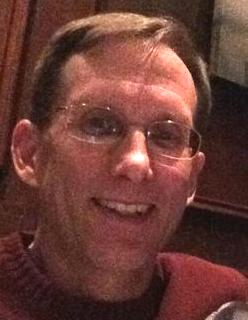 One of the most interesting twists resulting from Hurricane Maria striking Puerto Rico was Elon Musk's offer that Tesla could help Puerto Rico solve its energy crisis, with a long-term, 21st century fix. After all, its electrical grid was devastated, with almost all the power wiped out. It didn't help that even prior to this disaster its system was antiquated and badly in need of repairs. It is telling that we don't have similar offers to rebuild the Puerto Rico's health care system, which is similarly devastated. Or, for that matter, our system, which is its own kind of disaster. Mr. Musk was asked on Twitter if Tesla could help Puerto Rico using solar and battery power, and he responded in the affirmative, saying it had done so on smaller islands but faced no scalablity issues...
One of the most interesting twists resulting from Hurricane Maria striking Puerto Rico was Elon Musk's offer that Tesla could help Puerto Rico solve its energy crisis, with a long-term, 21st century fix. After all, its electrical grid was devastated, with almost all the power wiped out. It didn't help that even prior to this disaster its system was antiquated and badly in need of repairs. It is telling that we don't have similar offers to rebuild the Puerto Rico's health care system, which is similarly devastated. Or, for that matter, our system, which is its own kind of disaster. Mr. Musk was asked on Twitter if Tesla could help Puerto Rico using solar and battery power, and he responded in the affirmative, saying it had done so on smaller islands but faced no scalablity issues...
 Audacious Inquiry (Ai), an industry leader in connected care, and The Sequoia Project, Inc a non-profit dedicated to solving health IT interoperability for the public good, announced a teaming agreement to support the PULSE initiative and to leverage their combined expertise in support of displaced populations needing medical treatment and ongoing care as part of disaster response efforts. Ai first developed the PULSE concept under contract with the Office of the National Coordinator for Health IT (ONC) in April 2014. In March 2016, the California Emergency Management Services Authority (CalEMSA) contracted with Ai to develop and operate PULSE. PULSE was subsequently activated for use during the California wildfires in October 2017, with the support of The Sequoia Project. The non-profit works to advance the breadth of PULSE by leveraging national networks and by convening a national advisory council of experts.
Audacious Inquiry (Ai), an industry leader in connected care, and The Sequoia Project, Inc a non-profit dedicated to solving health IT interoperability for the public good, announced a teaming agreement to support the PULSE initiative and to leverage their combined expertise in support of displaced populations needing medical treatment and ongoing care as part of disaster response efforts. Ai first developed the PULSE concept under contract with the Office of the National Coordinator for Health IT (ONC) in April 2014. In March 2016, the California Emergency Management Services Authority (CalEMSA) contracted with Ai to develop and operate PULSE. PULSE was subsequently activated for use during the California wildfires in October 2017, with the support of The Sequoia Project. The non-profit works to advance the breadth of PULSE by leveraging national networks and by convening a national advisory council of experts.
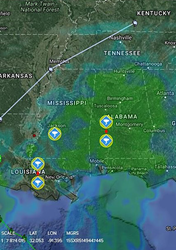 With new records being set each year for natural disaster losses, enterprises face an ever-increasing need to be prepared. For decades, DisasterAWARE has served the needs of top agencies worldwide, including U.S. Department of Defense, Homeland Security FEMA, the United Nations, the Association of Southeast Asian Nations (ASEAN), and a variety of international humanitarian aid organizations. With over 1.7 million users of DisasterAWARE mobile app, Disaster Alert for the public, spanning 115 international organizations, Kaazing is helping to broaden the reach of this critical, life-saving technology to provide businesses with an enterprise-grade solution.
With new records being set each year for natural disaster losses, enterprises face an ever-increasing need to be prepared. For decades, DisasterAWARE has served the needs of top agencies worldwide, including U.S. Department of Defense, Homeland Security FEMA, the United Nations, the Association of Southeast Asian Nations (ASEAN), and a variety of international humanitarian aid organizations. With over 1.7 million users of DisasterAWARE mobile app, Disaster Alert for the public, spanning 115 international organizations, Kaazing is helping to broaden the reach of this critical, life-saving technology to provide businesses with an enterprise-grade solution.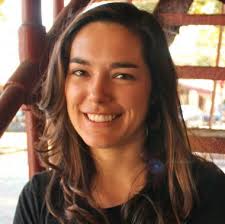 The Python Software Foundation's (PSF) Director Carol Willing is ready for the Grace Hopper Celebration of Women conference to start on October 14. One of the many highlights of her week will most definitely be the Open Source Day Codeathon, where some attendees will be making their very first contributions to open source. Carol will be mentoring coders for OpenHatch and the Systers' Volunteer Management System. OpenHatch matches people with projects, and Systers is the largest tech forum for women in the world. Learn more about these projects, and the PSF's role at Grace Hopper this year, in this interview.
The Python Software Foundation's (PSF) Director Carol Willing is ready for the Grace Hopper Celebration of Women conference to start on October 14. One of the many highlights of her week will most definitely be the Open Source Day Codeathon, where some attendees will be making their very first contributions to open source. Carol will be mentoring coders for OpenHatch and the Systers' Volunteer Management System. OpenHatch matches people with projects, and Systers is the largest tech forum for women in the world. Learn more about these projects, and the PSF's role at Grace Hopper this year, in this interview.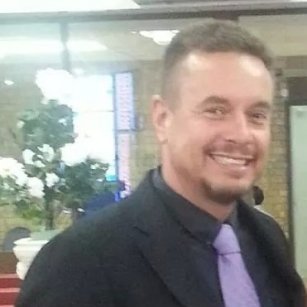 Undaunted by the devastation caused by Hurricane Harvey in Houston, the Stephen F. Austin Community Health Network (SFA) responded to the crisis by leveraging open source technology to reach out to their patients and victims of the hurricane in areas of Texas that are virtually inaccessible. The Health Network, a Federally Qualified Health Center (FQHC) covering Brazoria County, is one of the areas hardest hit by Hurricane Harvey and currently recovering. Using an advanced cloud-based version of the OpenEMR software, the SFA Community Health Network has been able to treat patients in clinics physically unreachable by their medical providers.
Undaunted by the devastation caused by Hurricane Harvey in Houston, the Stephen F. Austin Community Health Network (SFA) responded to the crisis by leveraging open source technology to reach out to their patients and victims of the hurricane in areas of Texas that are virtually inaccessible. The Health Network, a Federally Qualified Health Center (FQHC) covering Brazoria County, is one of the areas hardest hit by Hurricane Harvey and currently recovering. Using an advanced cloud-based version of the OpenEMR software, the SFA Community Health Network has been able to treat patients in clinics physically unreachable by their medical providers. During large disasters, like hurricanes, wildfires and terrorist attacks, people want emergency responders to arrive quickly and help people deal with the crisis. In order to do their best, police, medics, firefighters and those who manage them need lots of information: Who is located where, needing what help? And what equipment and which rescuers are available to intervene? With all of the technology we have, it might seem that gathering and sharing lots of information would be pretty simple. But communicating through a disaster is much more challenging than it appears...
During large disasters, like hurricanes, wildfires and terrorist attacks, people want emergency responders to arrive quickly and help people deal with the crisis. In order to do their best, police, medics, firefighters and those who manage them need lots of information: Who is located where, needing what help? And what equipment and which rescuers are available to intervene? With all of the technology we have, it might seem that gathering and sharing lots of information would be pretty simple. But communicating through a disaster is much more challenging than it appears...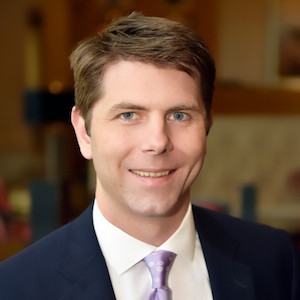 An important new trend in the federal sector involves the use of "innovation competitions" to develop Artificial Intelligence (AI) solutions for major problems that the agencies face. An ongoing AI innovation competition from Centers for Medicare and Medicaid Services (CMS), known as the Artificial Intelligence (AI) Health Outcomes Challenge began in March 2019. While that competition is only open to major consulting firms, the Department of Defense (DoD) was the trendsetter here and has been working on a series of AI competitions that began with the xView competition in March 2018.
An important new trend in the federal sector involves the use of "innovation competitions" to develop Artificial Intelligence (AI) solutions for major problems that the agencies face. An ongoing AI innovation competition from Centers for Medicare and Medicaid Services (CMS), known as the Artificial Intelligence (AI) Health Outcomes Challenge began in March 2019. While that competition is only open to major consulting firms, the Department of Defense (DoD) was the trendsetter here and has been working on a series of AI competitions that began with the xView competition in March 2018. Four continental states and one U.S. territory took a beating this fall as one natural disaster after another rocked communities in Northern California and along the Gulf Coast, spreading disaster relief resources and personnel thin as federal, state, and local governments scrabbled to address the crises. Wildfires in California's wine country claimed at least 42 lives, 8,400 structures, and 245,000 acres of land in October. Hurricanes Harvey and Irma pummeled Louisiana, Texas, and Florida only to be followed by Hurricane Maria, which slammed Puerto Rico on September 20 and left much of the U.S. territory without communications systems, electricity, clean water, or functioning hospitals....
Four continental states and one U.S. territory took a beating this fall as one natural disaster after another rocked communities in Northern California and along the Gulf Coast, spreading disaster relief resources and personnel thin as federal, state, and local governments scrabbled to address the crises. Wildfires in California's wine country claimed at least 42 lives, 8,400 structures, and 245,000 acres of land in October. Hurricanes Harvey and Irma pummeled Louisiana, Texas, and Florida only to be followed by Hurricane Maria, which slammed Puerto Rico on September 20 and left much of the U.S. territory without communications systems, electricity, clean water, or functioning hospitals.... An app developed by Flinders University to maintain mobile phone contact in disaster zones with no cellular signals has won a $279,000 humanitarian award. The Serval Mesh software lets users talk and text each other even when the usual mobile phone coverage fails. It is one of five winners in the Pacific Humanitarian Challenge, sponsored by the Federal Government, who will share $2 million prizemoney to further develop their projects...
An app developed by Flinders University to maintain mobile phone contact in disaster zones with no cellular signals has won a $279,000 humanitarian award. The Serval Mesh software lets users talk and text each other even when the usual mobile phone coverage fails. It is one of five winners in the Pacific Humanitarian Challenge, sponsored by the Federal Government, who will share $2 million prizemoney to further develop their projects...